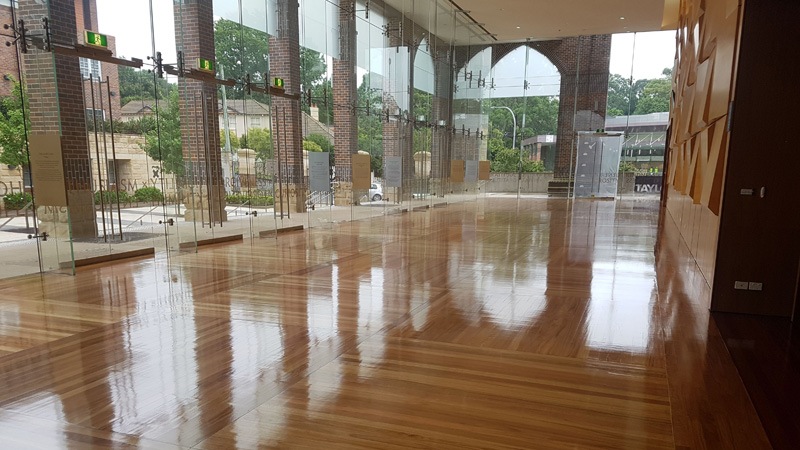More and more homeowners are turning to timber flooring for their glamorous looks and long life. Undoubtedly, timber floors are a worthy investment for any property. However, when you decide to lay new timber flooring, you may be quite unfamiliar with the process of preparing your floor and everything that comes with floor sanding and polishing. So, we’ll cover all those details for you here.
Why Do You Need Floor Sanding and Polishing for New Floors?
To begin with, many of you may have this question as to why a newly laid wooden flooring requires floor sanding and polishing. Now, finishing a new timber flooring without sanding and polishing may be quick and clean, but not doing so can become a headache later.
Firstly, it levels the edges of the floorboards. Secondly, it fills the gap between floorboards for a neat finish. Finally, it removes the surface grim and prepares the floor for better stain and finish penetration. So, floor sanding and polishing a newly laid wooden flooring is equally essential as renovating an existing wooden floor.
Preparing Your Floors for Sanding and Polishing
Before a floor sanding and polishing process, there are certain things that you should take care of as a preventive measure. Start with finishing your walls first, whether refinishing an existing flooring or laying a new flooring for your new home. If you are currently using the space, remove all the furniture and other furnishings, including staples and tacks, before hiring a professional floor sanding and polishing service. By clearing, you avoid any potential damage to your belongings and enable the professionals to work without interruptions.
Floor sanding creates a lot of dust. So, it is advisable to cover your windows and vents to prevent dust from getting into them. You must also ensure enough lighting, ventilation, water, and electricity for an uninterrupted floor sanding process. Before sanding, your floor sanding professional may also inspect your timber floors for any damage, bent or popping nails to fix them. Thereby ensuring a flat surface to prevent any potential damage to the floor while sanding.
Professional Floor Sanding & Polishing Process
Once the floor is ready for sanding, your sanding professional goes ahead with the initial sanding process. Depending upon the type of flooring and the finish or stain you choose, your flooring professional may use several techniques to sand your new floors. They usually begin with basic sanding using coarse grade sandpapers to fix unevenness and shape deformation in the floorboards. Floor sanding a new timber floor generally requires three passes (sanding the entire floor with particular grade sandpaper). They will use different sanding machines or methods to sand all the surfaces, including hard to reach areas near the walls and doors. And if you are refinishing a floor, sanding removes all the existing coatings, varnish, and stains, making it breathable and ready for the next finish.
After sanding, then comes polishing. Your flooring professional will seal the floor with sealers and protective finishes after vacuuming the floor. In case you need to stain, then your flooring professional will stain them before polishing.
How Long Does It Take?
The time for timber floor sanding and polishing wholly depends on the size of the property. It also depends on the weather and the treatment time based on what products are used on your new floor. You have to wait for at least eight hours to step on your newly finished timber floors. For best results, do not walk on your new floorings with heavy shoes and avoid dragging furniture.
Contact Stanton Flooring if you are looking for premium quality floorboard sanding and polishing services at affordable prices in Sydney.

